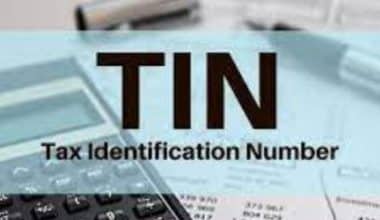Investments can still be advantageous, or at the very least, not as harmful, even after they have lost value. Harvesting tax losses is a strategy that turns a lost investor into a tax winner. You might be able to reduce both your present and future taxes with it. You can also sell or exchange underperforming investments for reasonably comparable investments. Tax-loss harvesting is the term for this procedure. As a result, less of your money may end up going to taxes. Aside from paying fewer taxes, it may also continue to generate income for you if you invest it. This guide will fully grasp what tax loss harvesting is about, its rules, and how it works. We also use Betterment, Wealthfront, and crypto tax loss harvesting to further buttress the point.
What Is Tax Loss Harvesting?
Tax-loss harvesting refers to the timely sale of securities at a loss to lower the amount of capital gains tax owing on the sale of other securities at a profit. Most often, you use this technique to lower the amount of taxes owing on short-term capital gains. This is because they are normally taxed at a higher rate than long-term capital gains. However, you can also use it to counteract long-term financial benefits. This approach can also help to sustain the value of the investor’s portfolio. It simply reduces the cost of capital gains taxes.
For many investors, tax-loss harvesting is an essential tactic for reducing their overall tax burden. Tax loss harvesting cannot put an investor back in their original position. However, it may lessen the severity of the loss. For instance, you may have to sell a decrease in the value of Security A to make up for a rise in the price of Security B. With this, you’ll be able to wipe out Security B’s capital gains tax obligation in the process. Investors who employ the tax-loss harvesting strategy can significantly reduce their taxable income.
How Does Tax-Loss Harvesting Work?
Tax-loss harvesting is the practice of making money off of capital losses by reducing capital gains. Investors may “bank” capital losses from unsuccessful investments to pay less capital gains tax on profitable assets sold annually. Using the proceeds from selling the unsuccessful investments. This strategy involves purchasing investments that are somewhat similar but not “essentially identical” to keep the portfolio’s overall balance. However, under the IRS rule, an investor will not be able to re-purchase the identical stock within 30 days if you use your loss to lower capital gains taxes.
How Much Tax-Loss Harvesting Can I Use in a Year?
The IRS has a cap on the total amount of capital losses that can be used to offset capital gains in a calendar year. In any given year, a single taxpayer is allowed to deduct up to $3,000 in short-term losses from short-term gains. The $3,000 cap also applies to long-term capital losses.
Long-term losses, thus, might be carried over to upcoming years. For instance, a $9,000 loss could be spread out across three tax years.
Is Tax Loss Harvesting Worth It?
Tax-loss harvesting is most advantageous when utilized to reduce regular income. This is because tax rates on income are frequently higher than those on long-term capital gains.
How Much Can I Tax Loss Harvest?
You sell a lost investment so that you can take advantage of tax losses. Your taxable capital gains can then be reduced by using that loss, and you may even be able to deduct up to $3,000 of your ordinary income.
Tax Loss Harvesting Rules
Aside from the IRS rules on tax loss harvesting, certain other rules guide its operation. Applying any of these rules for your next tax loss harvesting will be worthwhile if you understand what it’s about. The following are some of these rules.
#1. Substantial Identity Rule
You can’t possibly talk about tax loss harvesting rules without mentioning substantial identity rules. Unlike a Vanguard Total Stock Market ETF, a Vanguard Total Stock Market Fund cannot be exchanged for a Vanguard 500 Index Fund with this rule. These are nearly identical. Although some people think the IRS looks into these transactions’ specifics, no one I know has ever been the subject of an audit on this matter. The IRS faces more severe problems. As a result, I wouldn’t waste my time considering it. Because one fund has thousands more stocks than the other, it is simple to claim that the two funds. In this case, are not the same. You can argue that the two indices and the holdings are separate even if you select a Total Stock Market fund from two different companies.
#2. Wash Sale Rule
When tax losses are harvested, the wash sale regulation is the one that can be broken the most readily. This means that your basis will be reset and the loss you were trying to recover will be eliminated if you sell a security and then decide to acquire it again within 30 days. You cannot purchase shares within 30 days of selling them if you don’t sell the ones you just bought. You cannot buy the same security in an IRA that you recently sold in a taxable account. Even while it isn’t expressly forbidden by tax law, I think that breaking the letter of the law is at the very least inappropriate.
Of course, use caution if you frequently buy and sell. If you don’t hold an investment for 60 days after the dividend date, it will become a non-qualified dividend. The benefit of that tax loss will be severely diminished, so keep an eye on this rule.
#3. 60-Day Dividends Rule
Last on our list of tax loss harvesting rules is the 60-day dividends rule. Keep in mind that if you hold stocks for less than 60 days around (including before or after) a dividend date, the payout that would have otherwise qualified becomes an unqualified dividend. The tax rate on qualified dividends is much lower than that on non-qualified dividends. Therefore, if you begin tax loss harvesting in a hurry, you risk paying more in taxes. Slow down, especially on approaching dividend days.
Is It Better to Harvest Short-Term Or Long-Term Losses?
Short-term gains are frequently taxed significantly more heavily than long-term gains. Usually, short-term gains are taxed similarly to ordinary income. In light of this, when it comes to tax-loss harvesting, short-term harvesting losses are often more useful than long-term losses.
Crypto Tax Loss Harvesting
Tax loss harvesting is a potent technique of tax planning that enables individuals to offset their tax bills by selling assets at a loss before the end of the fiscal year. Concerning cryptocurrencies, it’s a low-effort method to sporadically save tens of thousands of dollars an hour. Moreover, it maintains this with your present portfolio.
Tax Loss Harvesting With Cryptocurrencies
Like equities, cryptocurrencies can be utilized to reap tax losses. This suggests that you can use cryptocurrencies to realize losses and reduce your tax liabilities by carefully selling or trading them.
On the other hand, there are several ways that cryptocurrencies vary from equities, which makes them even better candidates for tax-loss harvesting. Let’s discuss a couple of these advantages.
Does the Wash Sale Rule Apply to Cryptocurrency?
To prevent investors from deducting capital losses and then immediately repurchasing the same stock, the IRS currently has a “wash rule” in force. You cannot deduct a stock’s capital loss if you acquired the security within 30 days of selling it or if you did so within that time frame.
Only securities are subject to wash sale laws, according to the IRS. By IRS advice, cryptocurrencies are regarded as property rather than securities. Because of this, cryptocurrency users are not currently covered by wash sales restrictions. In the future, this might change.
Volatility and Tax Loss Harvesting
Compared to regular assets, cryptocurrencies have far higher volatility. Investors in cryptocurrencies have additional opportunities to identify and recover capital losses as a result of this volatility.
The difficult part for investors is determining which cryptocurrency in their portfolio has the highest cost basis (original purchase price) in comparison to the current market price. The assets with the greatest potential for tax deductions are those.
When Should You Tax Harvesting Cryptocurrency Losses?
There is a chance to tax loss harvest if the market value of your asset is less than its cost basis, which might drastically lower your prospective bitcoin tax obligation.
CoinTracker simplifies this for you by allowing you to see your potential performance. You can tax loss harvest any time the orange dotted line (cost basis) is higher than the blue solid line (market value).
Wealthfront Tax Loss Harvesting
Utilizing market volatility to your advantage, Tax-Loss Harvesting is a strategy that can reduce your tax bill and free up more money for investing by capturing investment losses. Savings from tax loss harvesting usually exceed our advisory fee by at least three times.
All Wealthfront taxable investment accounts can now use this strategy, which has been used for years by rich customers of financial advisors to reduce their tax liability.
How Does It Work?
We sell the ETF at a loss if the loss surpasses specific benchmarks established by our algorithm if an ETF in your Wealthfront portfolio has a value loss, which frequently occurs in broadly diversified investment portfolios. By utilizing the losses to offset gains from investments or ordinary income, you may be able to lower your overall tax burden.
In addition, we substitute another ETF with a high correlation for the ETF we sold at a loss. Because of this, even though Tax-Loss Harvesting may result in tax savings, the risk and return profile of your portfolio is unaffected. You can then reinvest the tax savings in your portfolio to raise its value.
Which Types of Accounts are Permitted?
The tax-loss harvesting process only applies to taxable accounts. Retirement accounts like IRAs and 401(k)s are exempt since gains and losses in these types of accounts are not taxable events. Harvesting tax losses are typically wrong for 529 programs as well.
Can I Do Tax-Loss Harvesting Myself?
Yes, but there are a couple of significant obstacles. It is essential to track lot-level cost basis, find substitute assets that match your investment goals but are not substantially equivalent, regularly examine your investment portfolio, and carefully abide by the wash sale rule (even as it relates to rebalancing). Many high-net-worth individuals consult their brokers or financial consultants to take advantage of tax losses, though typically just at year’s end.
Wealthfront has created a sophisticated Tax-Loss Harvesting solution that is software-based and continuously checks client investment portfolios for chances to harvest losses.
Are There Any Things to Think About Before Filing Taxes?
Wealthfront will provide you with a Form 1099 that outlines all the relevant investment transactions completed in your Wealthfront accounts, including those caused by Tax-Loss Harvesting, and should be attached to your tax return.
If you hold and trade the same ETFs in those other brokerage accounts as you do in your Wealthfront account, the transactions in those other brokerage accounts could lead to wash sales and reduce the tax benefit from the tax loss harvesting. If you have questions about wash sales, we suggest visiting the IRS website or getting in touch with your tax advisor.
Tax Loss Harvesting Betterment
The tax loss harvesting (TLH+) program of Betterment periodically scans portfolios for opportunities to recover losses that can be valuable at tax time (short-term drops brought on by market volatility). Although tax loss harvesting is not a novel concept for wealthy investors, the Betterment TLH+ program uses several enhancements that other implementations do not. It employs a thorough tax-efficiency method, attempting to maximize each user-initiated transaction while also boosting value through automatic measures like rebalances.
Betterment Tax Loss Harvesting Benefits
Selling a lost asset is part of the process of capturing tax losses. To maintain your risk appetite and expected returns, replace the sold asset with a comparable one. When you “harvest” a loss, you can:
- Offset the capital gains taxes you paid.
- Reduce your income to pay less in taxes.
- Gains can be offset by realized investment losses, which can also reduce taxable income from ordinary income by as much as $3,000 per year.
4 Ways Betterment Can Assist You With Tax Loss Harvesting
Betterment has several policies in place to help clients with investing and managing tax loss harvesting. Your situation determines the option you’ll choose. It’s primarily to help reduce the impact of your assets on your tax burden. Let’s define these powerful strategies.
#1. Adding Additional Funds to Your Portfolio
Any cash that enters your account, whether as a dividend or a deposit, is automatically allocated to assist you in getting back to your target weighting for each asset class. As a result, the portfolio can get back to having the right mix of assets without having to sell any shares. This complex financial planning method was previously only available to larger accounts. However, it’s now open to any size of the account, thanks to their automation.
#2. Recovery of Tax Losses
Tax loss harvesting can lower your tax obligation. It simply harvests your investment losses for tax reporting purposes while keeping you fully invested. When you sell an investment whose value has increased, you will be forced to pay capital gains tax. The good news is that the tax code considers both the profits and losses from all of your investments when calculating your capital gains tax. So relax, any losses (even from other investments) will reduce your gains and your tax liability.
#3. Location of the Asset
Maintaining the general composition of your portfolio while putting your most tax-inefficient investments, typically bonds, into a tax-efficient account is known as asset placement (IRA or 401k). This will shield your bond interest income, which is frequently treated as ordinary income and taxed at a higher rate.
#4. Use of ETFs as Opposed to Mutual Funds
Have you ever had to pay capital gains taxes on a mutual fund that had a loss for the year? Well, it happens. This uncomfortable situation occurs when a fund sells investments within the fund at a profit, even though the fund as a whole loses value. The tax on these gains must be distributed to the end investor, which is you, by IRS laws.
Exchange-traded funds (ETFs) are governed by the same rules. Although it’s much less probable that they will have to pay taxes because of the way ETF funds are structured. Most of the largest stock ETFs haven’t transferred any capital gains in more than ten years. ETFs with mutual fund-like investing strategies are frequently found, usually with cheaper fees.
Is Tax Loss Harvesting Legal in Canada?
You can offset capital gains with capital losses in Canada.
How Long Do You Have to Keep the Property to Avoid Capital Gains Tax?
If you lived in the property as your primary residence for a total of 24 months within the five years preceding the home’s sale, you may be qualified for the capital gains tax exemption.
Conclusion
Tax loss harvesting may seem complex, but understanding the rules helps investors not to completely lose out on failed investments.
Tax Loss Harvesting FAQs
Can you tax-loss harvest with ETF?
Harvesting investment losses could help you reduce the amount of tax you owe on realized capital gains. You may be able to reduce your tax liability by investing in exchange-traded funds (ETFs) or mutual funds and taking advantage of tax-loss harvesting.
Does Fidelity offer tax loss harvesting?
Yes, Fidelity offers tax loss harvesting throughout the year, not just at the end of the calendar year.
- RULE OF 40: Meaning, SAAS, Calculations & All You Need (+ Best Tools)
- Android App Analytics Solutions: Top 5 in 2023
- Form 1098 Mortgage: The Interest Statement






